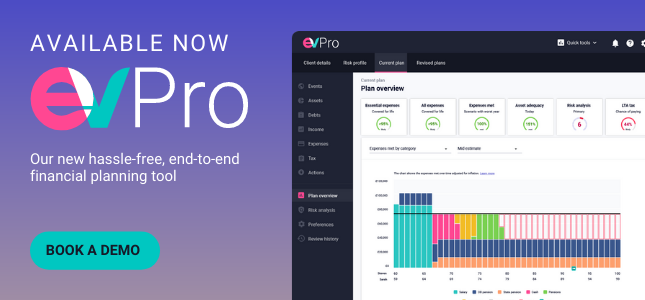What Not to Assume When Making Your Market Assumptions

Sound financial planning has moved away from a guessing game when viewing the future. Smart tools are available to take the pressure off advice professionals when building assumptions of market movements, but choosing the right tool is vital for business.
Making assumptions is a vital element of financial planning – yet this rarely attracts the spotlight amid the hubbub of regulatory messaging to ensure client suitability. The reality is stark. Get market assumptions wrong, and the entire plan can go awry at a rate of knots. Talking of which, both planner and client can be confused about what has gone wrong as the future plays out. Ultimately sparking awkward conversations, or worse, triggering the blame game.
A fit-for-purpose financial plan needs to incorporate and pivot on realistic projections of future investment performance. That much is a given. But, of course, no one can know what will happen in the future. On the other hand, we can never assume that any pattern of past happenings will continue for six months, a year, five years or ten. So what can the planner do to avoid potentially large pitfalls when making assumptions? It’s a big question of more than passing interest to an advised client – and the circling regulator.
Market assumptions: to outsource or not to outsource
Planners commonly shy away from fund picking, choosing to outsource investment selection because they understand layers of intricacies in matching funds to investment priorities. This saves time and energy, and deferring to experts who know funds inside out reduces the fear of unsuitability. So the question must then be posed: why play in risky waters with market assumptions when a planner can lean on external expertise with the know-how and the capacity to generate credible projections on a scientific basis?
A barrage of insistent questions can assail an uneasy financial planner in the dead of night. How do we forecast things we have no control over? How will assets evolve and play out? How will risk play out over the next 10 to 20 years? Is our definition of risk different from our peers in the profession? How do we get risk mapping right?
Various modelling tools are available on the market that responds to the challenge of ensuring market assumptions fit the purpose. However, while there’s an array of externally provided models that planners can utilise to establish performance forecasts, it’s important to understand and take account of the difference between deterministic and stochastic modelling.
Why assuming the past will be replayed is problematic
Deterministic models have conventionally been used in tools to project future investment returns. Although deterministic models benefit from simplicity, they rely on single assumptions about long-term average returns and inflation, signifying a level of certainty where none exists. Such outcomes, particularly income drawdown outcomes, can easily be upended by the unexpected implications of sequencing risk, with no allowance for the fact that markets are complex, irregular… and ever-changing. Ultimately, deterministic models can prove to be inadequate and potentially misleading.
Stochastic models, to the contrary, can reflect real-world economic scenarios, generating a spectrum of possible outcomes an investor may experience and the relative likelihood of each. The key here is that in avoiding the major shortfalls inherent in deterministic models, stochastic models bring forth realistic and robust forecasts that demonstrate the suitability and enable clients to make well-informed and sensible choices of where to invest. And this will have a direct impact on their future wealth prospects and continuing lifestyle.
Read our accompanying blog, Stochastic vs Deterministic Models: Understand the Pros and Cons, to learn more about the market's different types of asset models.
Assuming the best outcomes is not enough
‘Realistic future modelling’ are the three words a planner wants to hear and act upon, having moved swiftly away from finger-in-the-wind guesses. But as is the way of the world, not all stochastic models are the same – and care must be taken to adopt a model that properly delivers on the premise of realism.
Important considerations include:
- Is the economic model used to generate future scenarios credible, going beyond using historical data and a simple covariance stochastic model to illustrate how an investment strategy or asset will perform in the future?
- Does the stochastic model account for future annuity pricing?
- Is the inflation taken into account consistent with asset returns each year, rather than leaning on a fixed assumption?
- Is there an in-built dynamic correlation that adjusts for major market shocks to avoid diversification failing owing to large market downturns?
- Can the planner risk-map regularly and do it live?
- Is there an audit trail evidencing the suitability of advice?
Traditional stochastic models can come up short on these aspects. The stochastic model chosen must be robust and repeatedly deliver on the planner’s expectations. Not to be overlooked is the issue of the cost of PI cover. Employing – and being seen to employ – fit-for-purpose modelling from a trusted provider can keep PI costs under control. However, what’s most vital to advice firms is avoiding pitfalls that can be eliminated using the right tools.
To put it bluntly, a good model empowers suitable advice. The opposite is nightmarish as the regulator shines more light on whether the profession serves the advised consumer’s best interests.
So what next?
